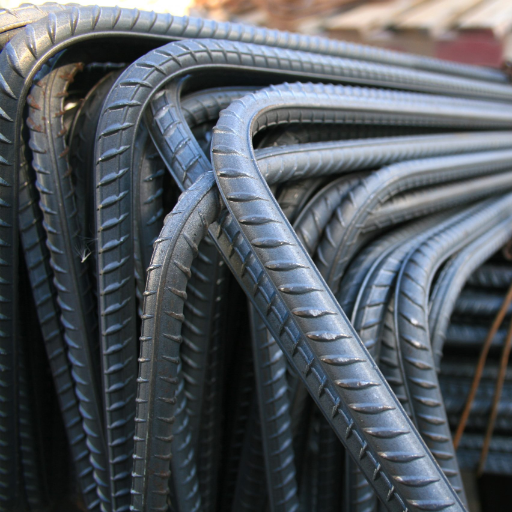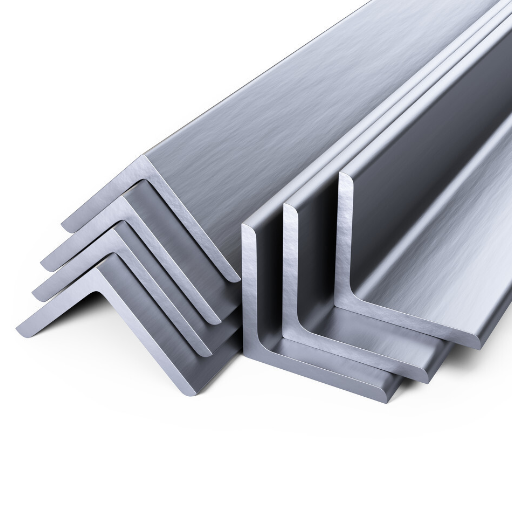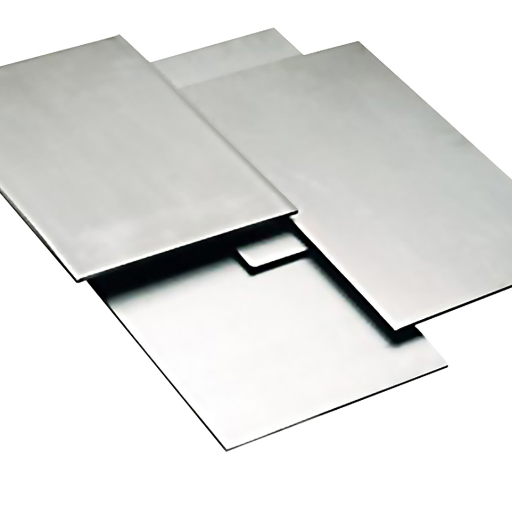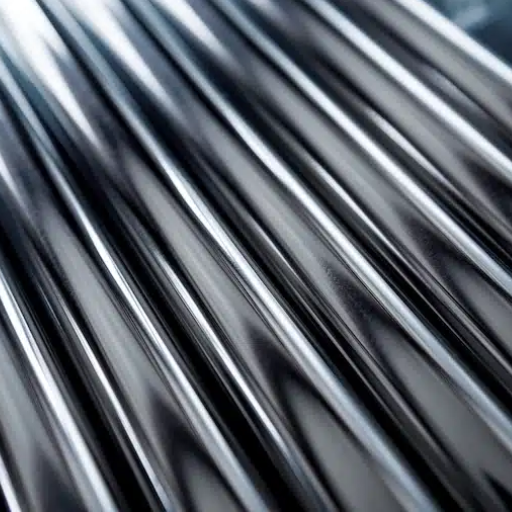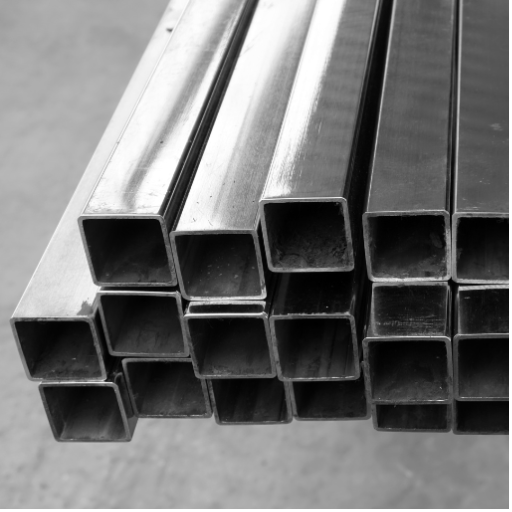Jewelry is something that comes into frequent contact with your skin, and for people with sensitive skin, selecting one can be a challenge. Some materials out there could be harmless to some people, but may cause irritation, redness, or allergic reactions in sensitive individuals. Such materials may cause allergic reactions and stainless steel is one material that a lot of people talk about. Stainless steel does not need frequent maintenance and is durable. Most people strikingly refer to it as hypoallergenic. But, can it be used by people with sensitive skin? This stainless steel Hypoallergenic guide will help you understand the properties of stainless steel, its hypoallergenic features, and stainless steel skin-friendly recommendations. From jewelry, timepieces, and even surgical devices, knowing the relationship between stainless steel and sensitive skin can steer your purchasing decisions while keeping comfort and health in balance.
What Makes Stainless Steel a Good Choice for Sensitive Skin?

Because of its resistance to corroding, being non-reactionary, and durable, stainless steel is considered a good option for sensitive skin types. Surgical stainless steel, which usually has a lower nickel content, is of higher quality and is less likely to cause allergic reactions due to its non-porous surface. The durability of stainless steel means that stainless steel does not exfoliate or release irritants overtime, making surgical stainless steel skin friendly for jewelry, watches, and medical instruments which are used regularly.
Understanding the Properties of Stainless Steel
The principal constituents of this alloy metal are Iron, chromium, and varying amounts of nickel, molybdenum, and carbon. The addition of chromium, in quantities of 10.5% or more, aids stainless steel in receiving its non corrosive states properties. It secures its stainless steel by forming a passive oxide layer which prevents oxidation from happening on the surface. Any change in the composition gives rise to a new grade, each intended to address a specific market or industrial need. For instance, the 304 and 316 grades are the two most common. 316 does have superior chloride resistance due to added molybdenum, thereby making it suitable for marine and chemical usage. On the other hand, ferritic stainless steels have low or no nickel content which makes them highly thermally conductive, useful for some structural and automotive applications. Once the composition is understood, engineers and manufacturers are able to ensure optimal selection of the grade in relation to the functioning and environmental conditions.
Why Hypoallergenic Stainless Steel is Beneficial
There are huge advantages to using hypoallergenic stainless steel, most significantly the reduction of allergic reactions due to small quantities of trace elements like nickel or iron. 316L is one of the surgical grades specifically designed to have low amounts of released free-blocking agents like nickel or tightly bond nickel within the alloy matrix. This makes hypoallergenic stainless steel the go-to option for bone and other medical implants, as well as jewelry and wearables that directly contact the skin for long periods of time. The corrosion resistant properties of the materials also make them reliable to a broad range of environments, even in the constant presence of moisture and sweat. Research has proven that hypoallergenic stainless steel meets strict standards of biocompatibility and is safe to use on or in sensitive parts of the body. Moreover, the non-reactive surface of the steel greatly softens modern mavericks and healthcare’s dependence on these materials.
Comparison with Other Metals
Hypoallergenic stainless steel outperforms other metals in biocompatibility and corrosive resiliency. Take for example, the nickel-containing alloys that are commonly used. They come with the risk of allergic reactions due to leeching small amounts of nickel ions. Another aluminum is lightweight, but highly prone to corrosion, especially in acidic or saline environments, making it less durable as compared to hypoallergenic stainless steel. While titanium is well known for his biocompatibility and strength-to-weight metrics, he is either too expensive for some uses or not readily available. Medical grade stainless alloys such as 316L and 304 offer a good blend of affordability, durability, hypoallergenticity and therefore Shultz best working across multiple industries. Their smooth, non-porous surface in combination with non-degradation lowers maintenance how to improve practical cost.
What Types of Stainless Steel Are Best for Sensitive Skin?

316L and 304 stainless steel are the best for sensitive skin. These alloys are medical-grade and hypoallergenic, because they do not contain a lot of nickel, which causes skin problems. 316L is further distinguished by having very little carbon, which lowers the chance of it corroding and enhances compatibility for long-term contact with skin. Both grades are freely used in medical implants, jewelry, and other wearables because they do not irritate skin and have great biocompatibility.
Differences Between 316L Stainless Steel and Other Grades
316L stainless steel differs from other steel grades mostly by its increased mechanical properties, low carbon content, and corrosion resistance. 316L also has a greater amount of molybdenum compared to 304 stainless steel, which greatly improves its resistance to chloride pitting and crevice corrosion. This property makes it ideal for marine applications or chemical processing environments where its corrosive nature is constantly underused.
The “L” in 316L indicates its low carbon content, which is usually under limit of 0.03% compared 316 higher carbon stainless steel grades. The low carbon content reduces carbide precipitation during welding which avoids intergranular corrosion and preserves welded joints’ integrity for corrosion in welded joints. Furthermore, ferritic or duplex stainless steels can be stronger or cheaper in some uses, but 316L provides unrivaled versatility, ductility, and biocompatibility which those types lack. The combination of chemical composition, strength, and safety propels 316L stainless steel to be the go-to material in critical medical devices, pharmaceuticals, and food processing equipment.
What is Surgical Stainless Steel?
Surgical stainless steel refers to a group of corrosion-resistant metal alloys specifically designed to meet the rigorous demands of medical, surgical, and implantable applications. It is most commonly associated with 316L stainless steel, an alloy made from a precise composition of iron, chromium, nickel, and molybdenum. The “L” in 316L denotes its low carbon content, which enhances its resistance to intergranular corrosion, particularly in environments exposed to high moisture or sterilization procedures.
Due to its durability and high resistance to rust, its commonly used as surgical scalpels and forceps, orthopedic screws, as well as pacemakers. Its surface is non-reactive with bodily tissues, making it biocompatible for long term use. Cadaveric studies have shown that surgical stainless steel can withstand autoclaving. Autoclaving is a repetitive sterilization process used in the surgical field. The product’s reputation was established due to its dependability and performance standards which every surgeon is familiar with as the gold standard in surgical- grade materials.
Identifying Hypoallergenic Options
While choosing hypoallergenic materials, one must pay attention to titanium and titanium alloys as they have some of the lowest allergenic potential. They are one of the most prominent hypoallergenic options due to high biocompatibility and low tendency to surface reactions. Studies have shown that the unique oxide layer of titanium essentially makes it immune to covering bodily tissues which greatly minimizes the possibility of an immune response being triggered, allergic reactions on the other hand, is highly unlikely as well. Zirconium, another biocompatible metal, is also gaining popularity for its allergic features along with superb corrosion resistance used in the medical and dental fields.
Alternatives such as ultra-high-molecular-weight polyethylene (UHMWPE) polyerm based hypoallergenic solutions are equally effective. These polymers offer commendable strength, low friction, and compatibility with the human body making them ideal for use in joint replacements and other prosthetic devices. The combination of meticulous patient history analysis and engineered material precision is what guarantees hypoallergenic options chosen to address safety and functional issues. These are remarkable steps towards materials science dedicated to the advancement of patient care.
Can Stainless Steel Jewelry Cause Skin Irritation?

Jewelry made from stainless steel may on some occasions cause irritation on the skin but it greatly relies on the individual’s skin type and the grade of the stainless steel. Some grades of Stainless steel may contain Nickel which is a known allergen. People who have nickel allergies or sensitivity may experience redness, rash, and other allergic responses after wearing such jewelry for long periods of time. Nonetheless, a lot of pieces of stainless steel jewelry are made of hypoallergenic grades, including surgical stainless steel, which makes irritation much less likely so most people can wear them. Choosing stainless steel of good value that has no nickel added offers peace of mind in potential skin issues.
Common Causes of Skin Irritation from Jewelry
One of the main irritants of the skin that comes from jewelry is the presence of metals like Nickel that can cause allergic reactions. Take the example of Nickel, it is one of the most common allergens, Niger has most, if not all, of Stainless alloys and is there for it’s cost and durability. Results show that 10-20% of the population has a allergy of nickel with mild rashes to dermatitis as symptoms. Other such metals are Cobalt and Chromium – they are known to cause similar reactions to sensitive people.
Another cause of irritation is the accumulation of body odor, dirt and bacteria on the surfaces of jewelry pieces, especially when these pieces are not cleaned for a long time. This can lead to moisture being trapped which worsen skin problems such as irritative dermatitis or even some forms of jock itch. Furthermore, costume jewelry could be a concern because the protective metal layer on the outer surface can erode with time, exposing the underlying metal which may be allergenic.
Other irritable factors include excessive heat and high humidity along with poor quality of certain used substances. Rough surfaces, on the other hand, can damage skin creating further irritation. These factors aid when thinking about shape and design for materials that need longer wear. Items made of surgical grade stainless steel, titanium and platinum are still the best choices when it comes to sensitive skin.
Tips for Preventing Skin Irritation
- Choose Hypoallergenic Materials: Go for surgical stainless steel, titanium, platinum or 18 karat gold. These materials are hypoallergenic, which is ideal. Specialty research claims that materials such as nickel are a common allergen with a prevalence of 10 to 20%, especially dominated by women.
- Inspect Jewelry Quality: Check the jewelry closely for scratches and inflammable elements. If the edges, as well as the rest of the surfaces, are not smooth and well finished, the wearer runs the risk of mechanical abrasion. Coarse polishing can also irritate skin if there is rough contact through repetitive motions.
- Limit Prolonged Wear: Avoid wearing jewelry for long periods of time. Particularly in the vicinity of rings and neck, where perspiration and moisture can build up. Studies show prolonged exposure to moisture can lead to skin irritation.
- Clean Jewelry Regularly: The presence of dirt, oil, and bacteria can enhance sensitivity to the skin. Atleast once a week, washing jewelry using a temperature gentler than boiling and with a simple warmer can reduce these risks significantly.
Following these elaborated methods, no matter how tedious they seem, will reduce chances of skin irritation and make wearing jewelry more comfortable and safe.
What Should You Consider When Choosing Stainless Steel Jewelry?

The following tips should help when selecting stainless steel jewelry:
- Grade of Stainless Steel: Ensure the piece of jewelry is from surgical mark grade stainless steel or a higher because these retain their luster and are corrosive resistant.
- Finish and Polishing: Minimized risk irritation. Lasting finish ensures skin contact won’t cause stains while providing visual appeal.
- Design and Comfort: The design allows comfort during daily wear and does not contain sharp and jagged edges.
- Durability: Stainless steel is well known for its strength. Select pieces for especially for bracelets and rings that endure constant use, made to resist wear-and-tear.
- Skin Sensitivity: Verify that the stainless steel is nickel-safe or nickel-free if you have sensitive skin, to reduce the risk of allergic reactions.
By paying attention to these factors, you can select stainless steel jewelry that is stylish, durable, and skin-friendly.
Key Features of Hypoallergenic Earrings
Identifying the features that guarantee the safety and comfort of hypoallergenic earrings is of utmost importance. These include ease of wear, safety properties, and resistance to wear and tear. Consider the following list of defining factors:
- Nickel-Free Composition
Earrings classed as hypoallergenic usually come with a guarantee of being made from nickel-free alloys or medical grade stainless steel, which significantly reduces the risk of allergic reactions. Such claims do not always hold true. As some coverings are necklaces metal, people who are allergic to nickel will still avoid using such earrings due to the underlying metal and thus will be put off, claiming the earrings are hypoallergenic. Studies indicate that allergies to nickel will affect ten to twenty percent of the population and alternatives need to be provided for non-allergic earrings.
- Non-Reactive Metals
These types of products use raw materials which are titanium, platinum and stainless steel with medical grade because they do not corrode easily and are nonreactive such as platinum’s great resistance against corrosion. For instance, lightweight titanium has become the metal of choice for many plastics surgeons since it is biocompatible and does not cause irritation for sensitive skin.
- Smooth and Polished Surface
Truly hypoallergenic earrings pieces have a bent metal without polishing technique finish which prevents excessive friction with skin.
Making the right decision in selecting hypoallergenic earrings with the correct features will guarantee the safety of the user, ease of daily wear, and reliability in the long term, minimizing the impact of wearing conditions.
How to Choose Jewelry Without Allergens
In the selection of jewelry, specific materials hypoallergenic properties must be prioritized. Platinum, titanium, and surgical-grade stainless steel are metals that go hand in hand with having sensitive skin because they are protective against corrosion and don’t discharge nickel or other compounds that can irritate sensitive skin. Also check for marks “nickel-free” or certificates that verify the composition of the jewelry.
Standard business information is another issue. Known brands always provide some information about their materials, coatings, and processes of production. To avoid unnecessary irritation, people with greater sensitivities may also select plain designs without decorative elements, which is better because they could contain unknown allergens.
Finally, look to silicone or ceramic for a more lightweight and flexible option. Non-reactive materials paired with reputable certifications make it easy to select jewelry that will not generate allergic reactions and can be worn for a long time.
What Are the Benefits of Wearing Stainless Steel Jewelry?

The practical and aesthetic value of stainless steel jewelry is far greater than any other type of jewelry. Its outstanding benefits are hypoallergenic property, cost efficiency without diminishing its quality, and, most importantly, durability. This type of jewelry is now becoming a practical choice because it offers value in long-term use with minimal maintenance. Additionally, these attributes make the stainless steel jewelry an better choice over precious metals.
Durability and Longevity of Stainless Steel
Rust resistant steel is a prominent name in the industry due to its unmatched potency, and exceptionally low wear over time. These attributes are a result of its three core elements: iron, carbon, and chromium in excess of 10.5 percent. Its surface is protected with passive Chromium oxide hence providing the rust resistant layer. This worsens corrosion, oxidation, and staining even when extreme salt or industrial pollutants are present.
Additionally, stainless steel possesses significant tensile strength, allowing it to endure considerable external forces without yielding or fracturing. This makes it appropriate for important uses in the aerospace, construction, and medical fields. Research shows that stainless steel structures and components can retain their structural integrity for long periods of time with minimal degradation within standardized maintenance workflows. Further, its exceptional ability to endure extreme variations in temperature makes it unmatched as a material for everyday and advanced engineering applications alike.
Affordability Compared to Other Metals
While titanium and some high-end alloys have their durability, stainless steel proves a more economical option, further claiming an edge in durability. The alloy’s optimal upfront cost may not apply to industries requiring carbon steel or aluminum; however, stainless steel’s remarkable wear resistance and low corrosive properties makes it far more effective in the long term value. For various specialized industries, the need for significantly less maintenance increases the alloy’s effective value, further justifying the long-term economical benefits. Secondary processes such as alloy synthesis and enhanced recycling techniques render stainless steel more affordable in comparison to other materials, optimizing its value across a variety of applications.
Reference Sources
-
Safety of Stainless Steel in Nickel Sensitivity1:
- Key Findings: This study highlights that while stainless steel may contain nickel, the nickel is tightly bound within the alloy, preventing it from leaching out and causing allergic reactions. This makes stainless steel generally safe for individuals with nickel sensitivity.
- Methodology: The study examined cases of dermatitis caused by stainless steel screws in nickel-sensitive patients, concluding that the reactions were likely due to pressure or irritants rather than nickel leaching.
-
Nickel Release from 304 and 316 Stainless Steels in Synthetic Sweat2:
- Key Findings: The research demonstrated that stainless steel grades like AISI 304, 316, and 430 release minimal nickel in synthetic sweat, significantly less than nickel-plated materials. These grades are unlikely to cause allergic contact dermatitis, except for desulphurized stainless steel (e.g., AISI 303), which caused reactions in 14% of tested patients.
- Methodology: The study used electrochemical tests, leaching experiments in synthetic sweat, and clinical patch tests on nickel-sensitive patients to assess nickel release and its effects.
Frequently Asked Questions (FAQs)
Q: Is stainless steel hypoallergenic for people with metal allergies?
A: Yes, stainless steel is often considered a hypoallergenic option for those with metal allergies. Specifically, 316 stainless steel, also known as surgical stainless steel, is less likely to cause allergic reactions and is safe for sensitive skin.
Q: What are the benefits of stainless steel jewelry for sensitive ears?
A: Stainless steel jewelry is durable, resistant to tarnishing, and generally safe for sensitive ears. Choosing stainless steel products made from 316 stainless steel can minimize the risk of irritation and discomfort associated with metal allergies.
Q: How can I tell if a piece of jewelry is safe for sensitive skin?
A: When selecting jewelry, look for hypoallergenic labels and ensure that it is made from high-quality materials like surgical steel. Avoid plated jewelry, as the base metal may cause irritation. Opt for stainless steel jewelry for sensitive skin to reduce allergy risks.
Q: What different grades of stainless steel are available for jewelry?
A: The most common grades of stainless steel used in jewelry include 304 and 316 stainless steel. 316 stainless steel is recommended for sensitive skin due to its higher resistance to corrosion and lower nickel content, making it a safer option for those with metal allergies.
Q: Can I wear stainless steel jewelry if I have sensitive skin?
A: Yes, you can wear stainless steel jewelry if you have sensitive skin, especially if it is made from hypoallergenic materials like 316 stainless steel. It is a suitable choice for individuals who experience irritation from other metals.
Q: Are there any risks associated with wearing stainless steel products?
A: For most people, wearing stainless steel products poses little risk. However, individuals with severe nickel allergies should be cautious, as some lower-grade stainless steels may contain higher nickel levels. Always choose high-quality stainless steel, such as 316 stainless steel, for the safest option.
Q: What should I look for when choosing hypoallergenic body jewelry?
A: When selecting hypoallergenic body jewelry, look for materials like surgical stainless steel or titanium. Ensure the jewelry is labeled as hypoallergenic and check for any potential nickel content to avoid irritation.

